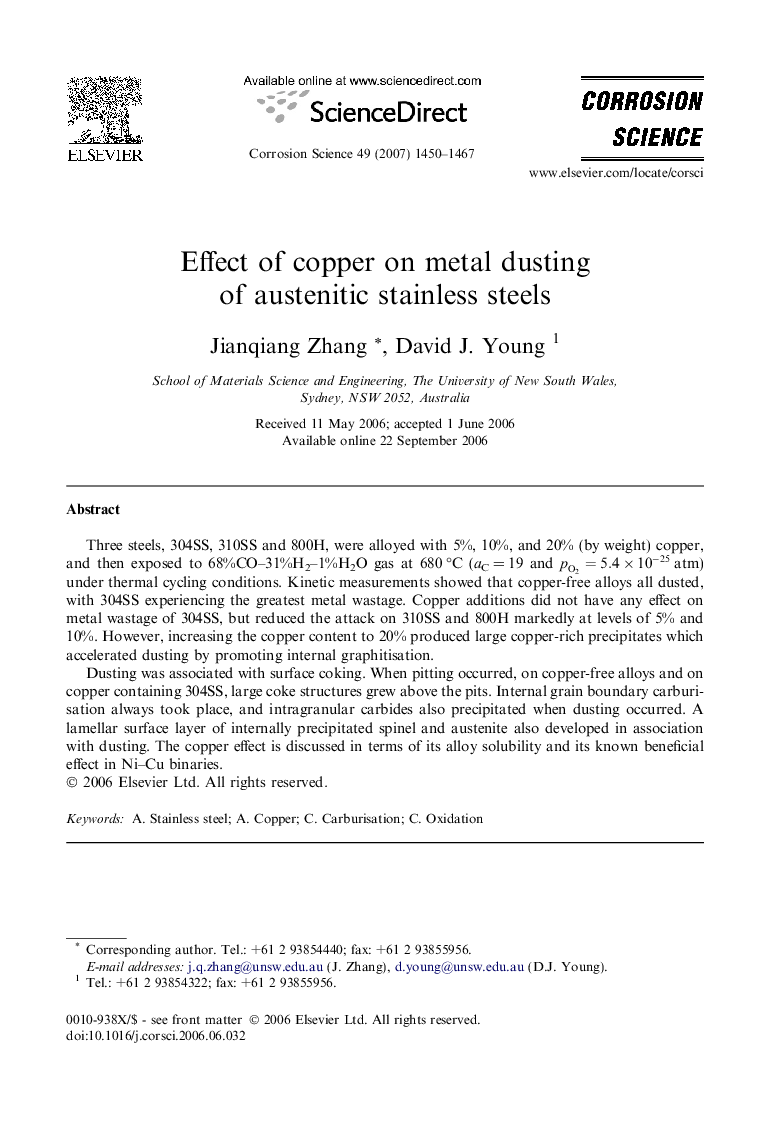| Article ID | Journal | Published Year | Pages | File Type |
|---|---|---|---|---|
| 1471870 | Corrosion Science | 2007 | 18 Pages |
Three steels, 304SS, 310SS and 800H, were alloyed with 5%, 10%, and 20% (by weight) copper, and then exposed to 68%CO–31%H2–1%H2O gas at 680 °C (aC = 19 and pO2=5.4×10-25pO2=5.4×10-25 atm) under thermal cycling conditions. Kinetic measurements showed that copper-free alloys all dusted, with 304SS experiencing the greatest metal wastage. Copper additions did not have any effect on metal wastage of 304SS, but reduced the attack on 310SS and 800H markedly at levels of 5% and 10%. However, increasing the copper content to 20% produced large copper-rich precipitates which accelerated dusting by promoting internal graphitisation.Dusting was associated with surface coking. When pitting occurred, on copper-free alloys and on copper containing 304SS, large coke structures grew above the pits. Internal grain boundary carburisation always took place, and intragranular carbides also precipitated when dusting occurred. A lamellar surface layer of internally precipitated spinel and austenite also developed in association with dusting. The copper effect is discussed in terms of its alloy solubility and its known beneficial effect in Ni–Cu binaries.
